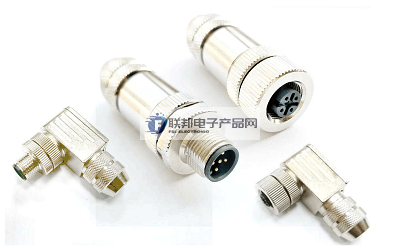Categorization:Product Information
The purpose of this article is to introduce the basic components of the connector and related terminology, they are: housing (housing), base (header), contact parts (contacts) - terminals and pins, connector metal, anode and annegative, plating, bonding and positioning, circuit marking, wire gauge (wire gauge) housing connector housing has the following roles: Support the contact part (pins, reeds, etc.), so that it is firmly and correctly in place; dust, dirt and moisture, to protect the contact part and the conductor; so that the circuit is insulated from each other the connector drawn in the figure above is a straight plug (in-line) connector. In-line connectors are characterized by wires entering from one half of the connector and exiting from the other half. These two parts of the connector are called the plug (male) and socket (female), chassis (header).
Mounted on the printed circuit board connector, the seat used is called the base (header), also known as the base (base) or piece of seat (wafer). Molex Incorporated used the name of the seat. The main difference between a base and a header is that a base is always mounted with circuit pins, while a header is just an empty shell. Chassis come in two forms: shrouded and unshrouded. Shroud refers to the connector pins and sockets, in the intersection of the part around the seat or skirt made of protective cover. The chassis also has friction locking type (friction lock style), it is part of the chassis with a cover, but with a locking device, which makes the chassis and the seat of the combination of more reliable. The plastic used for the seat is thermoplastic, which can be melted and cured many times. The leftover plastic from the molding process is collected and crushed for reuse. Specialized plastic for high-temperature environments is used, which has excellent high-temperature resistance properties. This plastic is required for connectors used for surface mount mounting (SMT, surface mount method of termination). There is also a surface mount compatible connector. The difference between the two is that SMC inserts the pin into the hole and then soldered on the PCB; and SMT using the solder pin paste soldered on the surface of the PCB. Because of the need to solder, the plastic must be able to withstand high temperatures. In other words, the surface mounting connector body, must be able to withstand high temperatures. Contacts (Contacts) The contacts in a connector combine the two parts of the conductor (or wires) that are to be connected. Once joined, a circuit is opened and current flows through the connector. There are two main types of contacts: terminals and pins. The exact shape of the physical part varies greatly. The terminal (or pin) has two ends: the front end and the rear end. The front end is always the bonding end, which meets the other terminal to form a contact and the back end always acts as a termination, either crimping or connecting the wires (conductors).

2, on the federal electronic products network platform related to the introduction and sales of products brief: federal electronic products network - a professional agent / production / sales of all kinds of [connectors | wiring harness | wire and cable products]; if you have a related [connectors | wiring harness | wire and cable products] purchasing / sourcing needs or would like to buy / to understand which connectors | wiring harness | wire and cable products we can provide solutions, please contact our business staff below; If you have related [connectors | harness | wire and cable products] sales / resources and promotion needs, please click on the ¡¡ Business Cooperation ← ¡" and specialists to discuss!